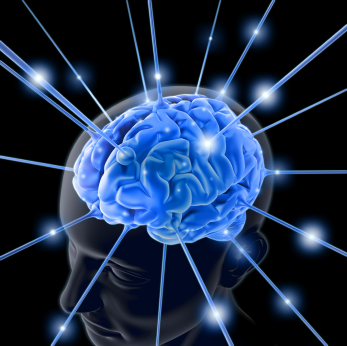 |
| Retrieved from... |
Traumatic Brain Injury comes in two types: Closed Head Injury, and Open Head Injury.
Closed Head Injury means that the brain is not exposed to the elements during the injury. However, it is still very dangerous. In 20% of fatal cases, there is no skull fracture present. This is especially true when TBI happens to kids because children have more flexible skulls than adults.
Open Head Injury means the brain is exposed to the elements during the injury. It is much more rare than Closed Head Injury, and is usually caused by gunshot wounds.
Remember Phineas Gage? He's probably the most famous case of Open Head Injury in textbooks.
 |
| Retrieved from... |
In 1848 Phineas was 25 years old and working in Vermont as a railway construction foreman. It was his job to set explosive charges with a tamping iron, when something went wrong and the iron bar was forced through his head. Amazingly, he woke up on the way to the doctor. He lived for 12 years after his injury, but friends and family say he was never the same person. His personality changed dramatically due to his brain injury.
 |
| Retrieved from... |
What's the Damage?
The damage caused by TBI is unique to each injury based upon what part of the brain is affected. For more information about about the different structures and functions of the brain, see my previous blog post called What's In a Brain? Since most TBI is caused by whiplash damage due to a motor vehicle accident, that's what we'll focus on for the rest of this blog post.
 |
| Retrieved from... |
The brain is made up of soft and delicate tissue. When it smashes around inside the skull it can get injured. This type of injury results in tearing of bridging veins and broken blood vessels. The blood vessels spill blood into the surrounding tissue, damaging or killing sensitive brain cells called axons.
Additionally, the brain's balance and sensitivity to neuropeptides, electrolytes, and excitatory amino acids can be altered due to brain injury. This leads to problems with a variety of functions, including mood regulation and sleep/wakefullness.
Other common problems include:
Frontal lobe damage (the front of the brain): confusion, irritability, trouble with memory, slower processing speed, slower reaction time, problems with attention and goal setting.
Occipital lobe damage (the back of the brain): vision problems such as "seeing stars" or light sensitivity...differences in what is seen vs. ow the body feels in space...dizziness, nausea, vertigo, and motion sensitivity.
Temporal lobe damage (the sides of the brain): problems with comprehension of simple instructions, naming objects, interpreting facial features, social relationships, emotional perception, and expression of emotion.
What to do?
 |
| Retrieved from... |
Brain damage is dangerous. Please take it seriously. Lots of people hit their head, see stars, shake it off and keep going. It's a myth that you need to lose consciousness to really hurt your brain. Click the links below to see video stories of a teen who shook off some TBI and got back in the game when she should have gotten help instead.
Keeping quiet can keep you out of the game - a teen's story.
Keeping quiet can keep you out of the game - a mother's story.
Prevent TBI:
Wear a helmet
Wear a seatbelt
Always drive sober and make sure you always have a sober ride
Use ice grippers on you shoes in the winter
Get help immediately if you get hurt
If you see someone got hurt, make sure they get help
After TBI:
Get a neuropsychological evaluation if you notice any changes in function or personality. This is a special test that helps figure out if there is any brain damage, where the brain damage is, and what to do about it.
Follow the recommendations of your doctor...these may include medications, but also referrals to speech therapists, physical therapists, occupational therapists, vocational rehabilitation, student support services, counseling, etc.
Help your brain heal itself by getting lost of exercise - good blood flow is needed for the brain to heal. Also, consider contacting a counselor who does neurofeedback - a special type of therapy to help your brain heal.










